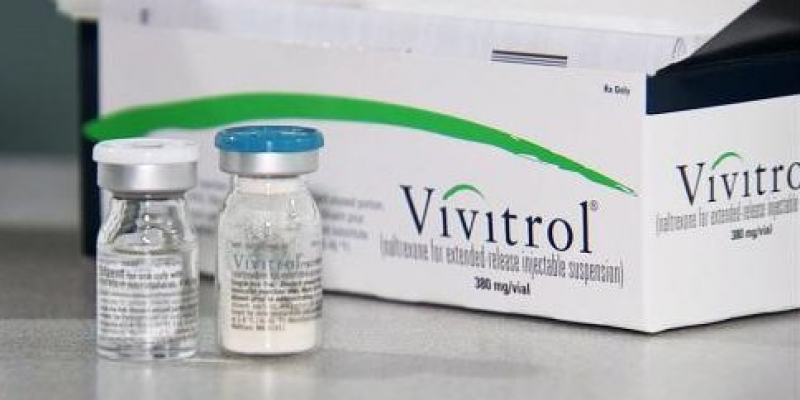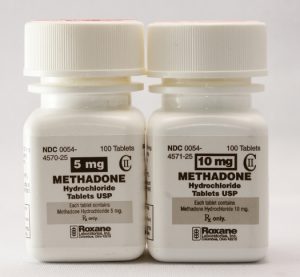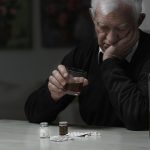
With a surging opioid epidemic taking place in our country and around the world, it is understandable why treatment providers, medical professionals, and governmental officers are opening their minds to new, alternative forms of addiction treatment. Medication-assisted treatment has become a top contender in treatment modalities for substance abuse, especially in the case of opioid addiction. Nevertheless, there are still many providers out there that stand firmly against this method, and opt for more traditional forms of therapy and drug rehab, arguing that medication-assisted treatment is merely a crutch, or quick fix. In this article, we would like to give you some background on the different forms of medication-assisted treatment and how their protocols work, and allow you to formulate your own opinions on the subject matter. We simply want to spread understanding and awareness, because without it, any opinion made is purely contempt prior to investigation.
What Is Medication-Assisted Treatment?
The Substance Abuse and Mental Health Services Administration (SAMHSA) tells us that medication-assisted treatment (MAT) is the use of medications with counseling and behavioral therapies to treat substance use disorders and prevent opioid overdose. They continue on to say that the medications operate to normalize brain chemistry, block the euphoric effects of alcohol and opioids, relieve physiological cravings, and normalize body functions without the negative effects of the abused drugs.
There are several medications which are utilized in medication-assisted treatment. They include, Suboxone, Subutex, Naltrexone, and older forms of medication, such as Methadone and Antabuse. How do these drugs differ from one another? Below, we have provided brief descriptions of each drug.
Suboxone:
Suboxone is a prescription medication that has two active ingredients in it; buprenorphine and naloxone. Buprenorphine is known as a partial agonist, whereas other opiods, such a heroin or OxyContin are full agonists. It binds to the same opioids receptors within the brain, which explains its ability to curb a user’s physical craving. Nevertheless, buprenorphine is in fact an opiate itself and a user of this substance has the potential of becoming physically dependent and addicted to the substance. Naloxone is what’s known as an antagonist, which in short means it blocks the euphoric effects of an opioid. The combination of the two ingredients is present in Suboxone to discourage misuse and abuse.
Subutex:
Subutex is also made up of buprenorphine, but unlike Suboxone, does not have Naloxone present in its chemical makeup. While this medication has proven to be beneficial in short time periods, such as during the detoxification process, it has shown to become addictive during prolonged use. Studies have shown that users have the ability to snort or inject Subutex, which will produce euphoric effects similar to heroin or other opioids. Whereas if a user attempted to snort/inject Suboxone, they may experience precipitous withdrawal.
Methadone:
Methadone is the longest standing form of medication-assisted treatment, or what is now known as opioid treatment programs (OTPs). Methadone is a full agonist, much like heroin and prescription opioids. Although utilized for more than 40 years in the “treatment” of opioid addiction, many cases have surfaced of Methadone’s addictiveness and negative side-effects. Unfortunately, while there are several studies which show the benefits of Methadone on a short-term basis, many researchers will not follow up on the long-term effects of prolonged Methadone use. To say these studies are not conducted because they would certainly counteract the drug’s effectiveness and prove its danger, would be presumptuous. Yet, it is certainly something to ponder over.
Naltrexone:
Naltrexone is often confused with Naloxone, one of the two main ingredients in Suboxone. Additionally, Naloxone is also known as Narcan, which is administered for the reversal of an opioid overdose. Similar to Naloxone, Naltrexone is an opioid antagonist, which works in the brain to block opioid effects. Naltrexone can be taken orally, in a tablet form, as well as an injection. This injection is now known as the Vivitrol shot, and is becoming a very popular form for opioid treatment.
Naltrexone is also prescribed for alcoholism. According to SAMHSA, when an alcoholic drinks, the brain’s opioid system releases endorphins triggering and enticing the alcoholic to drink more. Naltrexone blocks the endorphin-mediating reinforcing effects of drinking alcohol. Yes, Naltrexone is not addictive like some of its counterparts, yet, this medication still does not have the ability to stem mental obsessions and negative behaviors associated with addiction.
The Treatment Behind Medication-Assisted Treatment
Medication-assisted treatment sounds well and good…in theory. But, when we delve deeper into the regulations behind MAT, we see many holes in this modality of treatment. In 2002, Suboxone became the first addiction medication that could be prescribed by a physician, rather than having to stand in line at a clinic or seeing an addictions’ specialist or being admitted to rehab. The thought process was that addicts no longer had to feel the shame and embarrassment of going to one of these facilities, and instead could visit a physician in a typical office setting. Nevertheless, the qualifications physicians have to have to prescribe Suboxone are a measly 8 hours of training. Furthermore, any physician that is licensed to prescribe medication, can in fact, prescribe Vivitrol. Although addiction is recognized as a brain disease in the medical community, the required training does not even come close to that which is required to treat illnesses such as cancer or diabetes.
While regulations and physician training are questionable to say the least, there is also the matter of mandated therapeutic practices within medication-assisted treatment. Yes, if a patient is currently in a program, such as an Intensive Outpatient or Partial Hospitalization Program while receiving one of the forms of medication we have discussed, then they are receiving counseling and behavioral therapies. But to what end? Most studies will tell us that MATs show the best results when a patient is in the program for an extended period of time. Yet, IOPs & PHPs last no more than a few months or a year at a time. Also, when we consider the physicians that have an 8 hour training or license to prescribe, but do not have addiction treatment licensures, how many patients are receiving medication as their treatment, rather than medication-assisted treatment?
Wrapping Up
As you can see, these practices have some beneficial qualities, but the questions that arise from these modalities needs to be researched further. Yes, in regards to harm reduction, medication-assisted treatment certainly does its job; it keeps addicts alive until they are ready to fully recover. With that said, this modality should be the last option of treatment, not the first. How can we really know if a person is able to recover with a 12-step program and abstinence-based treatment, if we never give them the opportunity to try?
Contact Clearbrook Today
Are you or someone you love struggling with drug addiction or alcoholism? If so, we can help. For over 4 decades, Clearbrook Treatment Centers has been providing effective treatment through the utilization of the 12-steps and an abstinence-based approach. We have had the privilege of watching thousands recover from a seemingly hopeless state of mind and body. We want you to know that you have that same opportunity. If you are ready to take the first step, please contact our Admissions Specialists today.









